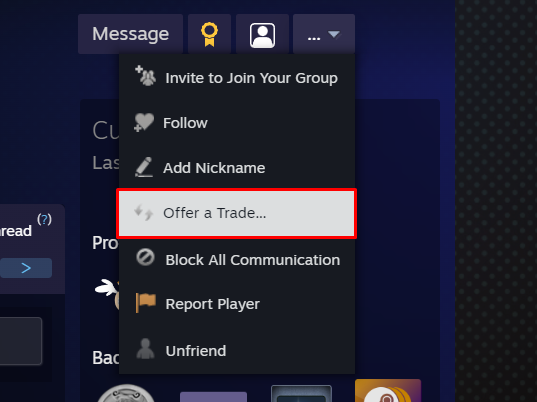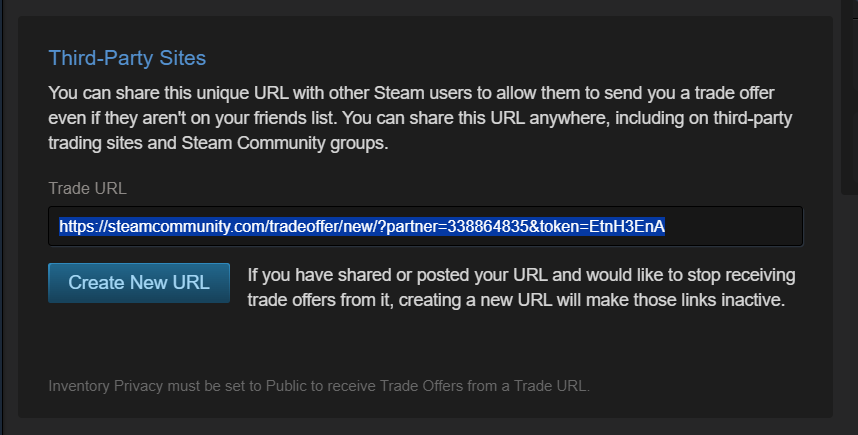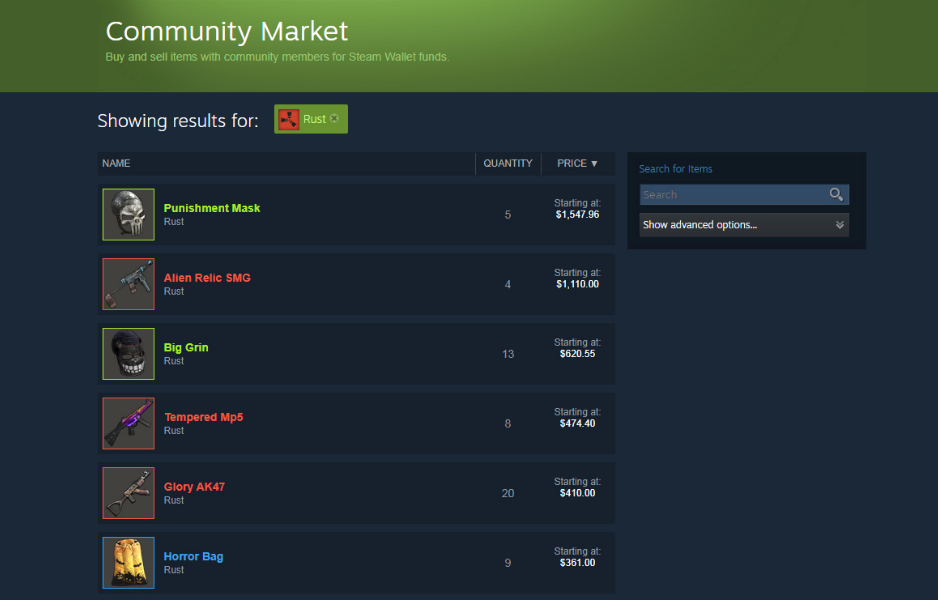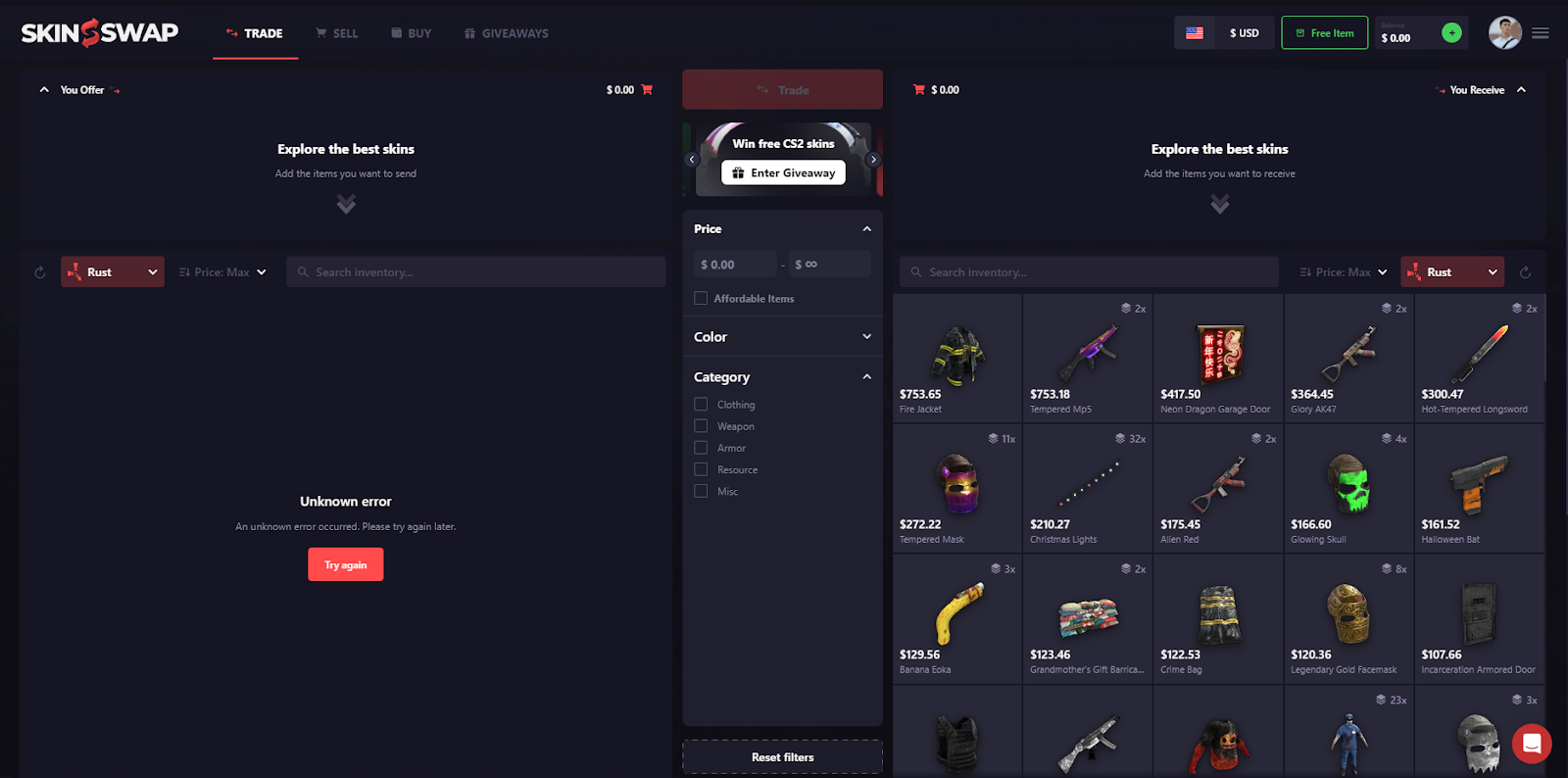Discover our blogs
get the latest updates, tips, and news from the world of skins, gaming, and fair trading.
get the latest updates, tips, and news from the world of skins, gaming, and fair trading.

Trading skins in Rust is like a post-apocalyptic flea market, except that you exchange cans of beans with neon AK-47s or slick hazmat suits. To some, it is a matter of getting a skin that shouts “I am the boss in this server.” To others, it is a hustle to make a profit.
In any case, it is an essential element of the Rust culture to trade the Rust skins, and it is simpler than you might think. In this guide, we have simplified everything there is to know about how to trade skins in Rust, through every possible method.
Rust skins are purely cosmetic, altering the appearance of your weapons, tools, or clothes, with only the purpose of showing off, as they have no gameplay effect. Such skins may be sold, purchased, or traded, but since they are associated with Steam, they usually also hold real-life value. Have you ever witnessed a rare skin, such as the Glory AK47, selling for hundreds of dollars? That is the type of stakes we have in mind.
The trading process occurs either via the in-game system or via external websites, and thousands of gamers trade skins every day. It is a combination of strategy, negotiation, and a bit of gut feeling. Are you ready to jump in? Here is a step-by-step guide on how to trade skins like a pro.
There are three key ways to trade skins in Rust. Each has its own vibe, so let’s break them down step-by-step to help you find the method that fits your style.
The simplest way to trade is to send a direct trade offer through Steam. It’s like sliding a note across the table, saying, “Here’s what I’m offering, what do you got?” You pick the skins you’re willing to give up and what you want in return. Here’s how to do it:

It’s straightforward, but you’ve got to know who you’re dealing with. Ever sent a trade offer and sat there refreshing your notifications? That anticipation is part of the fun.
Not sure what to offer? Let someone else do the heavy lifting by sending them your Steam Trade Offer Link. This custom URL lets others propose trades to you, which is great if you’re open to offers. Here’s the process:

This method’s perfect when you want to browse offers without committing upfront. It’s like putting up a “for sale” sign and seeing who bites.
The Steam Community Market is the place to be when you want a secure, hassle-free method to sell or purchase Rust skins. It is an official store of Valve, and it is directly implemented in Steam, so no third-party sketchy sites to worry about. It is possible to list your skins to sell or look at what others have to offer without leaving the Steam ecosystem at all. It is ideal for players who wish it to be simple and safe, although there is a slight setback- the fees. This is how to do it:

The Steam Community Market is the safest it can get; it is not flawless, though. Selling a skin deposits the money in your Steam Wallet, which can be used only on Steam but not cashed out to your bank. In addition, Steam charges 15% commission per sale, meaning that should you sell a skin at a dollar mark, you will earn close to eight dollars and fifty cents. A few exchanges may also run aground with the Steam escrow mechanism, where the items or money can be delayed up to 15 days to block fraud. When you are searching the extremely rare skins, the inventory of the Market may not be as large as it is on third-party sites, but it will come at the cost of security. It is kind of like shopping in a store whose quality you can trust; you end up paying a little extra, but you trust that you are not being taken to the cleaners.
If you’re looking for more options or better deals, third-party websites are the way to go. These platforms aren’t run by Valve, so they’re a bit like the Wild West, full of opportunity, but you’ve gotta watch your back. Sites like SkinSwap or Tradeit let you deposit skins, browse others’ inventories, and trade with ease. Here’s how it works:

Third-party sites can be faster and offer better deals than Steam’s market, but scams are a real risk. Always double-check the site’s legitimacy before diving in.
Not all trading sites are created equal. Here are five we’ve tested and can vouch for when it comes to safety and reliability:
Before using any site, check its reputation on forums like Reddit or Rust Discord servers. A quick search can save you from a world of hurt.
Trading skins is thrilling, but one wrong move can leave you empty-handed. Here’s a rundown of what to do and what to steer clear of to keep your trades smooth and scam-free.
Selling Rust skin is your pass to at least personalizing your game and perhaps earning some money. Whether it be trade offers through Steam, sharing your trade link, or third-party websites, the most important thing you can do is to remain smart and safe. Look up skin prices, check who you are trading with, and do not miss Steam Guard. In no time, you too will be wheeling and dealing like a pro in the Rust marketplace. Well, what is your next trade? That blinding new rifle skin, or perhaps a comfy jacket to show off in the snow? Visit the Steam Market or a reputable store, and begin crafting your dream inventory today.